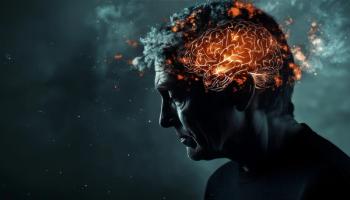
- Psychiatric Times Vol 25 No 11
- Volume 25
- Issue 11
Adolescent Psychosis
Adolescents who present with symptoms that suggest a psychotic disorder pose a number of diagnostic and treatment challenges. This article attempts to provide a practical guide to the assessment and management of adolescents with severe psychotic illness, including schizophrenia, schizophrenia-like disorders, and bipolar disorder.
Adolescents who present with symptoms that suggest a psychotic disorder pose a number of diagnostic and treatment challenges. This article attempts to provide a practical guide to the assessment and management of adolescents with severe psychotic illness, including schizophrenia, schizophrenia-like disorders, and bipolar disorder. Epidemiology, differential diagnosis, causes, and predisposing factors will also be covered in the context of a comprehensive framework for assessment and management.
Prevalence of psychosis in adolescence
Five percent of adults with schizophrenia report onset of psychosis before age 15 years.1 Despite the lack of precise incidence and prevalence rates from childhood or adolescent population–based studies, it is generally agreed that the prevalence of psychotic disorders increases markedly during adolescence.
Gillberg and colleagues2 estimate the prevalence of psychosis in 13- to 19-year-olds as 0.54%, increasing from 0.9 per 10,000 at age 13 years to 17.6 per 10,000 at age 18 years.2 Male preponderance has been reported in some studies, but this is not a consistent finding and may be related to lack of robust data.
Adult bipolar disorder prevalence is estimated at 1%. However, community studies in adolescents have indicated a prevalence of 0.5% to 1%, which varies with age and diagnostic criteria. Complete ascertainment of cases in this age group remains a concern: many episodes are only recognized in retrospect.3-6
The diagnosis of schizophrenia-early-onset psychosis in adolescents younger than 18 years-is based on the same DSM-IV criteria as for adults. The diagnostic criteria focus on 3 characteristic symptoms7:
• Reality distortion (hallucinations and delusions).
• Disorganization.
• Psychomotor poverty (for example, poverty of speech, poor motivation, social withdrawal, and a flat affect).
Diagnostic criteria and atypical presentations
DSM-IV diagnosis of schizophrenia requires a 6-month period of disturbance that can include both a prodromal period of deterioration before the onset of psychotic symptoms and a residual phase. However, active psychotic symptoms must be present for at least 1 month. One important modification of criteria from those used in adults is that a failure to achieve age-appropriate interpersonal, academic, or occupational progress can substitute for significant deterioration in self-care and social, educational, or occupational functioning below premorbid levels.
In episodes lasting between 1 and 6 months, a diagnosis of schizophreniform disorder may be made. Briefer episodes that have a sudden onset and that resolve rapidly to the premorbid level of functioning within a month without evidence of an organic cause are diagnosed as brief psychotic disorders, according to DSM-IV criteria. Because classical schizophrenia may eventually develop in some patients with this diagnosis, ongoing follow-up is required. The presence of a clear stressor is sometimes associated with a brief reactive psychosis, although, without further follow-up, this presumption cannot be used to make a definitive diagnosis.8
Affective disorder in adolescents (whether manic, depressive, or mixed) can present with psychotic symptoms such as delusions, hallucinations, or thought disorder. It may be relatively easy to distinguish affective disorder from schizophrenia when the patient has symptoms that are mood-congruent with affective episodes and no clear negative symptoms. A firm diagnosis of affective disorder may be more difficult to establish in adolescents who present with bizarre and persecutory delusions, mood incongruent hallucinations with lability of mood, or significant functional deterioration. The diagnostic uncertainty in such cases may have to be accepted and shared with parents and/or caregivers while awaiting a clarification as the clinical picture evolves. Pointers to possible schizophrenia might be the insidious onset of affective symptoms with difficulties in premorbid adjustment and functioning, a family history of schizophrenia, and the presence of a significant thought disorder.9
Concurrent presentation of schizophrenic and affective symptoms that meet criteria for schizoaffective disorder appears to carry a short-term clinical course and a longer-term prognosis intermediate between schizophre-nia and affective disorder.
Acute psychotic, manic, or hypomanic symptoms may also present in association with substance misuse or with organic conditions that need to be distinguished by a careful history, physical examination, and appropriate investigations. A period of enforced abstinence may be necessary to determine whether symptoms are truly enduring.
Induced delusional disorder (folie deux) may be encountered in adolescents in a close or enmeshed emotional relationship with a psychotic parent or caregiver or sibling. In this setting, psychotic beliefs may be shared rather than actually experienced by the adolescent.10
The prodromal phase
Adolescents occasionally present with nonspecific psychotic symptoms, such as odd beliefs, mistrust of others, and magical thinking. These overvalued ideas lead to a decline in interpersonal and school functioning. Whether this represents the prodromal phase of a severe psychotic disorder is difficult to answer prospectively. However, frank psychosis develops in up to 40% of affected patients within 12 months of symptom onset.11 A positive family history of psychosis and marked impairment of functioning with evolving psychosis-like symptoms are considered to be risk factors for psychotic illness. Adolescent schizophrenia, in particular, is associated with motor or language developmental delays and premorbid cognitive and social impairments that seem to merge with the onset of an insidious psychotic illness.12
While research in psychological and pharmacological interventions is ongoing, specific clinical management is limited to continued monitoring to identify those who may be at risk for a psychotic episode and to address specific presenting problems with practical and psychotherapeutic support.8,13 A high index of suspicion should be maintained for adolescents who manifest the risk factors mentioned above so that prompt treatment can be initiated at the onset of a clear psychotic episode.
Notwithstanding the ongoing debate about the role of active pharmacological and psychological treatment of prodromal symptoms of schizophrenia, any treatment option at this stage requires an explanation to the patient and his or her parent or caregiver. This should include information about the incomplete evidence base and a detailed discussion of the relative risks and benefits. The goal is to actively involve the patient and his family in making treatment decisions.11 A conservative approach to treatment at this stage is advised. Psychosocial and other benign options should be employed before antipsychotics.14
Assessment of adolescent psychosis
An array of possible causes may underlie psychotic symptoms in an adolescent (Table); the correct diagnosis has significant management implications. Comprehensive assessment and judicious use of physical examination and investigations aid this process.
A detailed history of presentation is required from multiple sources including the patient; the parents or caregiver; and, with consent, school or employment records. Although this history will aid in diagnosis, the clinician must face the challenge of obtaining an objective and accurate account from diverse, often emotionally involved, contributors who provide discrepant narratives.
Semistructured diagnostic interview tools can be useful in the mental status examination. The Kiddie Schedule for Affective Disorders and Schizophrenia for School Age Children (6 - 18 years)–Present and Lifetime Version (K-SADS-PL) is consistent with DSM-IV diagnoses and is particularly useful for those clinicians who rarely encounter psychosis in adolescents.15
A detailed history, including family history of psychosis, should aim to identify an accurate developmental level of cognitive, social, and linguistic abilities, supplemented where possible with an objective assessment of premorbid abilities and functioning (eg, school or employment records, psychometric assessment of strengths and difficulties). This should help assess the psychotic symptoms in the context of immature and illogical thinking or childlike fantasies in a developmentally young adolescent. The possibility of a pervasive developmental disorder that could present comorbidly with a psychotic disorder should be kept in mind.
A detailed physical examination that looks for any evidence of a focal neurological, endocrine, or other systemic abnormality is an essential part of the initial assessment. Judicious use of MRI or CT imaging or electroencephalography may be warranted to rule out a rare but possible organic cause of psychosis, as are tests to rule out possible infections or autoimmune or metabolic conditions. Routine measurement of, for example, complete blood cell counts, urea and electrolytes levels, and liver and thyroid function, as well as electrocardiography are recommended at baseline and periodically thereafter to check for adverse effects of treatment medications. Urinary drug screening or hair analysis is part of all diagnostic workups, regardless of whether there is a history of substance abuse.
Presentation issues
Organic conditions such as frontal and temporal lobe epilepsies, systemic lupus erythematosus, multiple sclerosis, hyperthyroidism, cerebral tumors or infections, and neurodegenerative conditions such as Wilson disease and metachromatic leukodystrophy, can sometimes present with symptoms of psychosis, and must be distinguished from severe mental disorders for appropriate management.16
A fluctuating mental state with changes in orientation and cognitive functioning may be an indication of an organic condition. The challenge is to establish that the organic condition has a clear temporal and causal relationship with the psychotic presentation and that it is not a chance co-occurrence with a severe mental health disorder. Consultation with pediatric and neurological colleagues and negotiation about a suitable setting for assessment and management of such disorders are required.
Adolescents with schizophrenia or mania-like psychotic presentations often have a history of substance abuse. Consider whether the psychotic episode:
- Was induced by a psychoactive substance (eg, amphetamines, cocaine, Ecstasy) that typically presents with an acute onset and rapid resolution.
- Is an underlying psychotic disorder precipitated by a substance of abuse (eg, cannabis).
- Is merely a comorbid substance abuse disorder not directly related to psychosis.
Psychotic symptoms that do not abate after 1 or 2 weeks in a controlled setting with no substance abuse indicate an underlying psychotic illness.17 Uncertainty may have to be tolerated and pragmatically managed in some cases where distinction is difficult to achieve. A detailed assessment is essential to devise a management plan that targets continued substance abuse in an adolescent with schizophrenia or bipolar disorder.17-19
Hallucinatory experiences may occur in dissociative states in adolescents.20 Emotional and conduct disorders, a history of sexual or physical abuse, and borderline personality disorders may also present with nonspecific hallucinations. Adherence to strict diagnostic criteria in the context of a detailed history will usually clarify the diagnosis.
The social and cognitive impairments in young people with schizophrenia may be difficult to distinguish from similar impairments observed in developmental histories of higher functioning adolescents with pervasive development disorders. Adherence to diagnostic criteria with a clear history of hallucinations or delusions along with a careful developmental history can clarify the diagnosis.12,21
Management issues
Management of adolescent psychotic disorder is based on a comprehensive assessment of the adolescent and his environment with an emphasis on identifying any predisposing, precipitating, or maintaining factors and any protective aspects.
A detailed assessment of risk to self and others is required. This information may be inferred from the patient’s history; risk assessment must also take into account the patient’s mental state, his own insight into illness, and likely adherence to treatment. An assessment of vulnerability (eg, physical or sexual abuse or neglect) is particularly important, as is a determination of the level of support available to counter any of these potential risk factors. Such risk assessment must be an ongoing and dynamic process throughout treatment.
An appropriate legal mandate is needed as well; this includes informed consent for treatment from the patient or a parent or guardian. Consider how to treat against the wishes of the adolescent while providing adequate safeguards.
Treatment priorities are guided by the stage of illness, whether it is an acute (resolution of acute symptoms), maintenance (maintaining treatment gains), or recovery phase (rehabilitation and adjustment to any residual deficits). A multimodal approach is required that focuses on the bio-psychosocial needs of the patient (Figures 1 and 2).8
Despite the limited evidence base and off-label use in adolescents with psychotic disorders, atypical antipsychotics have become the first-line treatment choice. These agents are presumed to have better tolerability and outcomes. (Patients and their parents need to be informed of the off-label use of these drugs.)22 We have no data with which to differentiate the atypical antipsychotics, other than clozapine, on the basis of relative efficacy. Thus, the choice of agent is mainly dictated by the adverse-effect profile. Start with a low dosage and slowly titrate to therapeutic level.
Treatment of mood disorders in combination with psychosis also follows a stage-specific treatment plan. Pharmacotherapy during the acute phase includes a combination of a mood stabilizer (eg, lithium, valproate, carbamazepine) with an adjunctive atypical antipsychotic. In case of poor response or intolerance, a different combination of these 2 types of drug is recommended, followed by augmentation with a second mood stabilizer if poor response persists. If there is still no response to treatment with a combination of the 3 drugs, clozapine or electroconvulsive therapy can be considered.23
Conclusion
Sharing a range of possible outcomes rather than a definitive prognostic outlook for adolescent psychosis with patients and their parents may be appropriate because of the possibility of changes over time. Findings from long-term treatment outcome studies in adolescents with psychotic disorders show relatively poor results.16 Adolescents with schizophrenia and those whose symptoms have an insidious onset with marked negative features have poorer outcomes than those with concomitant affective features. Substance abuse comorbidity increases the risk for relapse. Family intervention adapted for the developmental needs of adolescents as well as strategies to reduce hostility and criticism directed at the patient are likely to be helpful, although they have not been formally evaluated within this population.16
References:
References
1. Asanrow RF, Asanrow JR. Childhood-onset schizophrenia: editor’s introduction. Schizophr Bull. 1994;20:591-597.
2. Gillberg C, Wahlström J, Forsman A, et al. Teenage psychoses-epidemiology, classification and reduced optimality in the pre-, peri- and neonatal periods. J Am Acad Child Adolesc Psychiatry. 1986;27:87-98.
3. Carlson GA. Annotation: child and adolescent mania-diagnostic considerations. J Child Psychol Psychiatry. 1990;31:331-341.
4. Geller B, Luby J. Child and adolescent bipolar disorder: a review of the past 10 years [published correction appears in J Am Acad Child Adolesc Psychiatry. 1997;36:1642]. J Am Acad Child Adolesc Psychiatry. 1997;36:1168-1176.
5. Volkmar FR. Childhood and adolescent psychosis: a review of the past 10 years. J Am Acad Child Adolesc Psychiatry. 1996;35:843-851.
6. Harrington R, Myatt T. Is preadolescent mania the same condition as adult mania? A British perspective. Biol Psychiatry. 2003;53:961-969.
7. Liddle PF. The symptoms of chronic schizophrenia: a re-examination of the positive-negative dichotomy. Br J Psychiatry. 1987;151:145-151.
8. Clark AF. Schizophrenia and schizophrenia-like disorders. In: Gillberg C, Harrington R, Steinhausen C, eds. Clinician’s Deskbook of Child and Adolescent Psychiatry. Cambridge, UK: Cambridge University Press; 2006:79-109.
9. Clark AF. Proposed treatment for adolescent psychosis, 2: bipolar illness. Adv Psychiatr Treatment. 2001;7:143-149.
10. Munro A. Persistent delusional symptoms and disorders. In: Gelder MG, Lopez-Ibor JG Jr, Andreason NC, eds. New Oxford Textbook of Psychiatry. Oxford, UK:Oxford University Press; 2000:651-676.
11. Yung AR, McGorry PD. Prediction of psychosis: setting the stage. Br J Psychiatry. 2007;51:s1-s8.
12. Hollis C. Adolescent schizophrenia. Adv Psychiatr Treatment. 2000;6:83-92.
13. Phillips LJ, McGorry PD, Yung AR, et al. Prepsychotic phase of schizophrenia and related disorders: recent progress and future opportunities. Br J Psychiatry. 2005;48(suppl):s33-s44.
14. McGorry PD, Hickie IB, Yung AR, et al. Clinical staging of psychiatric disorders: a heuristic framework for choosing earlier, safer and more effective interventions. Aust N Z J Psychiatry. 2006;40:616-622.
15. Kaufman J, Birmaher B, Brent D, et al. Kiddie-SADS-Present and Lifetime Version (K-SADS-PL). Pittsburgh: Western Psychiatric Institute and Clinic; 1996.
16. Clark AF. Psychotic disorders. In: Gowers S, ed. Clinical Practice in Adolescent Psychiatry. London: Arnold; 2001:193-210.
17. McClellan J, Werry, J; American Academy of Child and Adolescent Psychiatry. Practice parameters for the assessment and treatment of children and adolescents with bipolar disorder. J Am Acad Child Adolesc Psychiatry. 1997;36(suppl 10):157S-176S.
18. American Psychiatric Association. Practice guideline for the treatment of patients with schizophrenia. Am J Psychiatry. 1997;154(suppl 4):1-63.
19. McClellan J, Werry J; American Academy of Child and Adolescent Psychiatry. Practice parameters for the assessment and treatment of children and adolescents with schizophrenia. J Am Acad Child Adolesc Psychiatry. 1994;33:616-635.
20. Altman H, Collins M, Mundy P. Subclinical hallucinations and delusions in nonpsychotic adolescents. J Child Psychol Psychiatry. 1997;38:413-420.
21. Kolvin I. Studies in the childhood psychoses, I: diagnostic criteria and classification. Br J Psychiatry. 1971;118:381-384.
22. Lewis S, Lieberman J. CATIE and CUtLASS: can we handle the truth? Br J Psychiatry. 2008;192:161-163.
23. Kowatch RA, Fristad M, Birmaher B, et al; Child Psychiatric Workgroup on Bipolar Disorder. Treatment guidelines for children and adolescents with bipolar disorder. J Am Acad Child Adolesc Psychiatry. 2005;44:213-235.
Articles in this issue
about 17 years ago
Theoretical Models of Health Behaviorabout 17 years ago
The Differential Diagnosis of Childhood Developmental Disordersabout 17 years ago
Wrong Choicesabout 17 years ago
Coping With Obscene Phone Callsabout 17 years ago
Broken Mugabout 17 years ago
Cyber Bullyingabout 17 years ago
The Dementias: Neuropsychiatric Syndromes of the 21st Centuryabout 17 years ago
Acupuncture: An Updateabout 17 years ago
Antipsychotics in Dementia: Evidence of Risk MountsNewsletter
Receive trusted psychiatric news, expert analysis, and clinical insights — subscribe today to support your practice and your patients.














